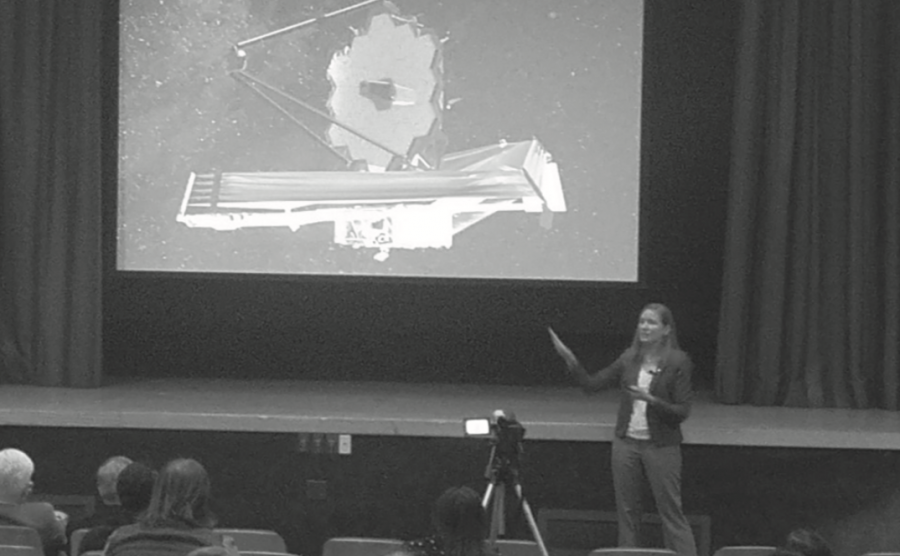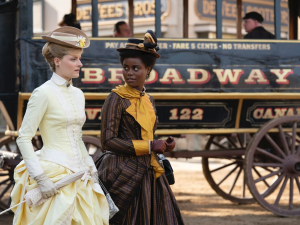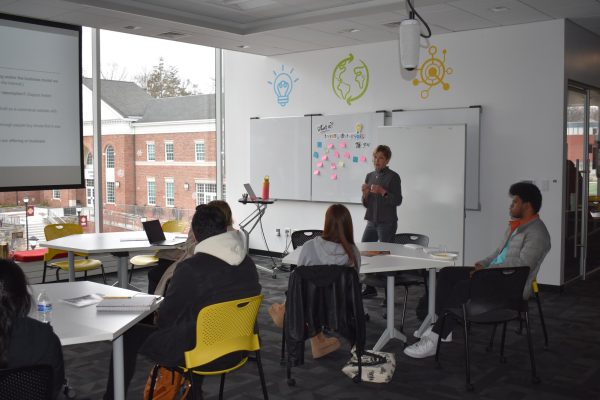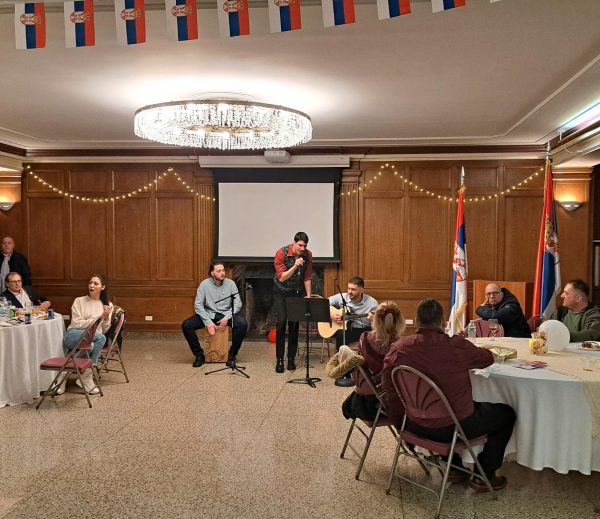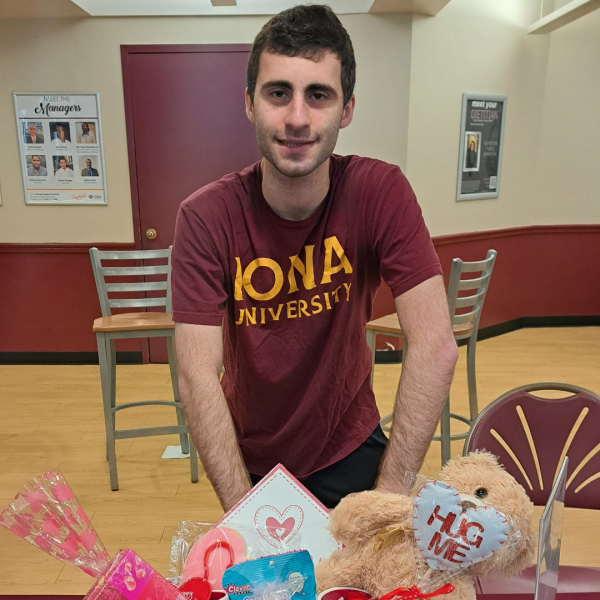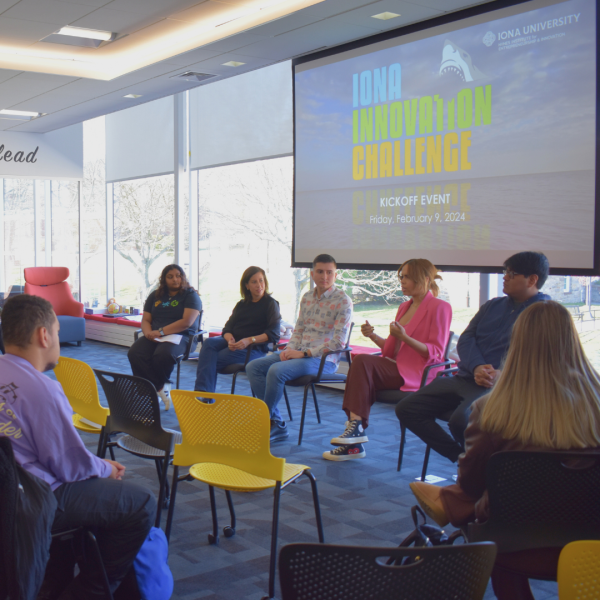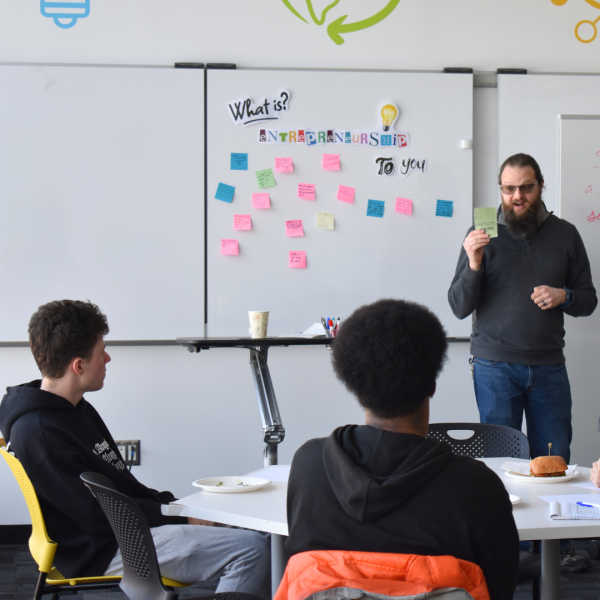New NASA telescope discussed in Iona lecture series
December 6, 2018
NASA astrophysicist Amber Straughn presented on and discussed NASA’s new telescope, the James Webb Space Telescope, in the Murphy Auditorium on Dec. 29, as a part of the Bullen Lecture Series.
Straughn said that when a star dies, it sheds its outer layers into the universe. Afterwards, those layers reprocess into other stars. In the early universe, the atmosphere was solely made up of the elements helium and hydrogen. She claims that the iron in human bodies, calcium in bones and the numerous gases such as carbon, nitrogen and oxygen in our atmosphere come from these recycled elements in the universe.
“Astronomy gets to the heart of our big questions,” Straughn said. “Questions that get to the heart of what it means to be human. Questions such as, where do we come from? How did we get here? Are we alone?”
Straughn grew up in rural north central Arkansas. Since she was a child, this setting helped spark her lifelong fascination with astronomy until majoring in physics in college, and later working at NASA.
“The sky was beautiful and dark,” Straughn said. “I was far away from any city lights, and the stars really captured my imagination as a kid. As a young kid, I was looking up at the sky and asking my parents questions about the stars that they couldn’t answer.”
Straughn said that the new Webb telescope is the successor to the 28-year-old Hubble telescope.
The Hubble telescope was launched into low Earth orbit in 1990 as a research tool, according to NASA’s official website. Straughn said that this device played a critical role in human understanding about the cosmos and revealed the universe to mankind. The Hubble helped scientists locate the aurora on Saturn, revealed all phases of star formations and deterioration in regions such as the Carina Nebula and Butterfly Nebula, which Straughn displayed on a screen throughout her lecture.
In the late 1990s, NASA started building the Webb telescope, a new and different instrument that is supposed to answer important questions about how our universe works. According to Straughn, several tests delayed NASA from launching the telescope into space with no errors. The purpose of Straughn’s presentation was to announce that NASA’s project is almost complete.
The James Webb Space Telescope is a 3-story tall, gold-coated infrared telescope that is about the size of a school bus. Gold was used because of its ability to reflect light. Straughn also said that the large size of the 6-foot-5-inch mirror included in the telescope will help produce sharper images. In addition, the telescope consists of a sun shield that is about the size of a tennis court. With all this taken into account, the Webb is the biggest telescope NASA will have ever sent into space. Straughn said that a bigger telescope like the Webb will be able to collect more light.
NASA will launch the Webb telescope 350 miles away from Earth – 4 times further away from the moon – and it will orbit the sun in line with the Earth. This is 10 times further than the altitude at which the Hubble was launched. The Hubble did not travel to stars, planets or galaxies. It only took pictures of them as it whirled around Earth at about 17,000 miles per hour.
Straughn closed her lecture by stating the four themes for NASA’s aimed completion of the Webb telescope: Go past what we can see, learn how galaxies grow over time, learn about how stars are born and discover more planets in the galaxies.
“I believe [the] Webb [telescope] will really deliver some unexpected and exciting results in the area of exoplanet science,” Straughn said.
The Webb telescope is expected to be launched into space in 2021.
For more information, visit https://jwst.nasa.gov.




